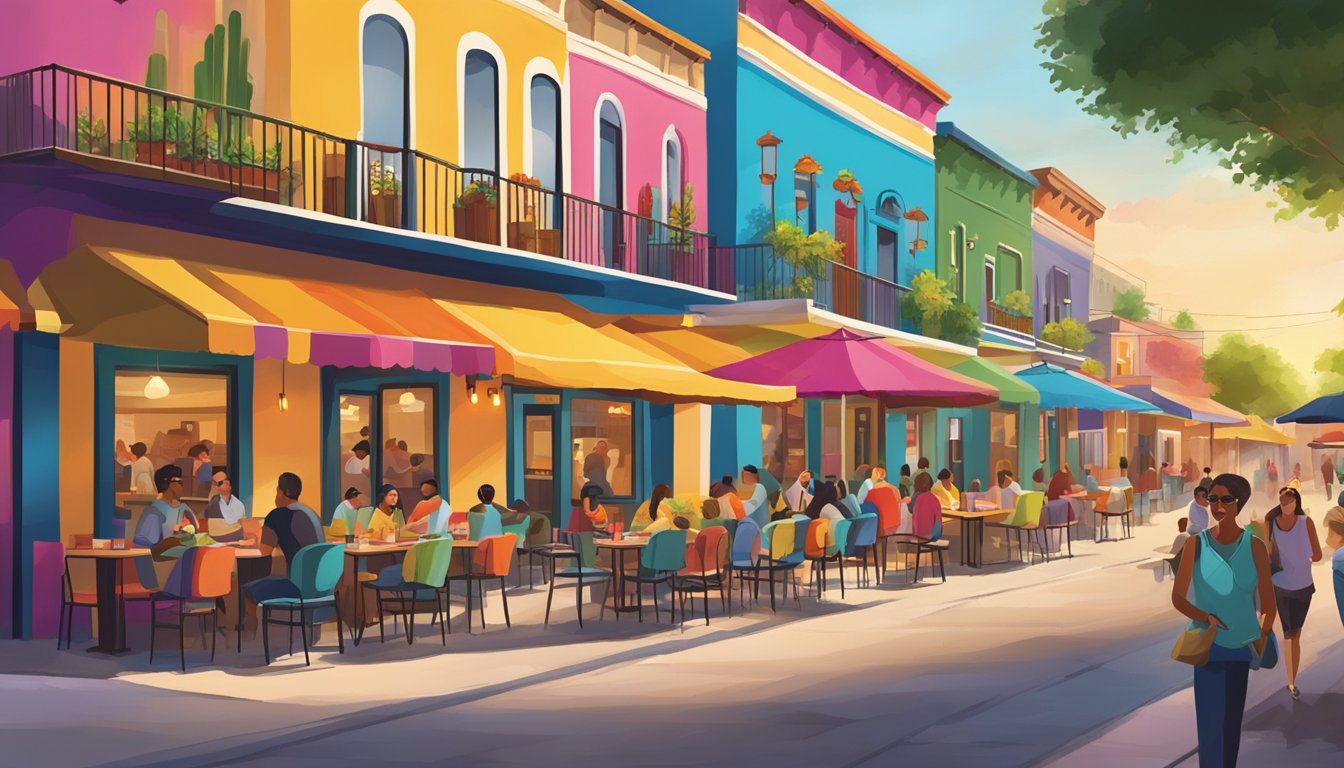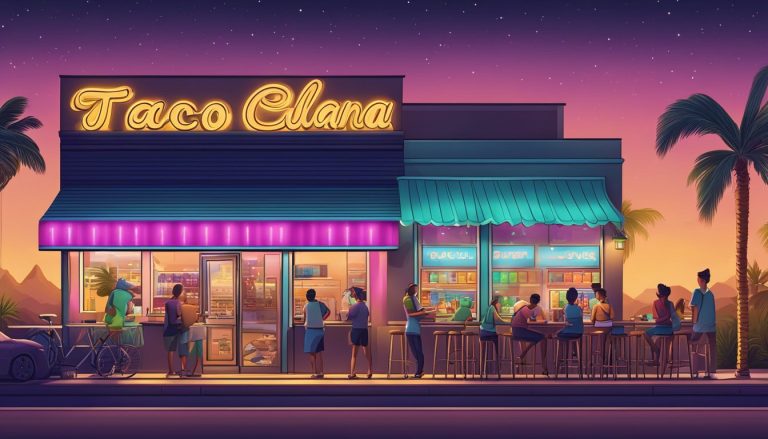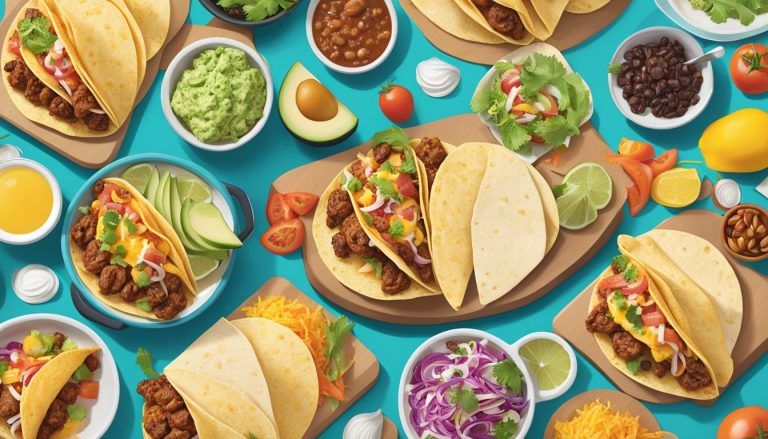Taco Cabana’s story began in September 1978 when Felix Stehling opened the first restaurant at the corner of San Pedro and Hildebrand Avenue in San Antonio, Texas. What started as a simple taco stand in a repurposed Dairy Queen building quickly grew into a beloved Tex-Mex chain. Taco Cabana’s success can be attributed to its unique open-air patio concept and fresh, authentic Mexican cuisine served 24 hours a day.
The restaurant’s origins were rooted in practicality. Stehling, who owned a bar across the street called the Crystal Pistol, initially purchased the vacant Dairy Queen property for additional parking. However, he saw an opportunity to create something more and decided to open a taco stand instead. This decision would prove to be the foundation of a thriving business that would eventually expand beyond San Antonio.
By 1985, Taco Cabana had grown to six locations in the San Antonio area. The chain’s popularity continued to rise, and by 1992, it had expanded to over 30 restaurants in San Antonio and surrounding areas. Today, Taco Cabana remains a fixture in the Tex-Mex fast-casual dining landscape, with its signature pink buildings and fresh margaritas serving as recognizable symbols of its San Antonio roots.
Founding of Taco Cabana
Taco Cabana‘s story begins in 1978 with Felix Stehling’s innovative idea to transform an unused property into a thriving restaurant. His vision and entrepreneurial spirit laid the foundation for a Tex-Mex fast-food chain that would become a San Antonio icon.
Felix Stehling’s Vision
Felix Stehling, a San Antonio businessman, spotted an opportunity in 1978. He purchased a vacant Dairy Queen building at the corner of San Pedro and Hildebrand Avenue in Midtown San Antonio. Initially, Stehling acquired the property to provide additional parking for his bar, the Crystal Pistol, located across the street.
Recognizing the potential of the location, Stehling decided to venture into the food industry. He envisioned a casual, affordable Tex-Mex restaurant that would serve fresh, quality food quickly. This concept would fill a gap in the local market and cater to the city’s love for Mexican cuisine.
From Crystal Pistol to Patio Cafe
Stehling transformed the former Dairy Queen into a unique dining establishment. He maintained the open-air design of the existing structure, creating a patio cafe atmosphere. This distinctive feature would become a hallmark of Taco Cabana restaurants.
The first Taco Cabana opened its doors in September 1978. It offered a menu of fresh, made-to-order Tex-Mex favorites at affordable prices. The restaurant’s 24-hour service and drive-thru option set it apart from competitors.
Taco Cabana’s popularity grew rapidly. By 1985, Stehling had expanded the chain to six locations in the San Antonio area. The success of the concept attracted attention from potential investors, but Stehling initially chose to keep the business within the family.
Expansion and Growth

Taco Cabana experienced significant expansion through franchising, acquisitions, and corporate restructuring. The company evolved from a local San Antonio favorite to a regional restaurant chain with a growing footprint.
Franchising Journey
Taco Cabana began franchising in the 1990s to accelerate growth. Richard Cervera, who joined as president in 1994, spearheaded the franchising initiative. The company carefully selected franchise partners and established strict quality control measures.
Franchise agreements ensured consistency across locations, maintaining Taco Cabana’s signature fresh ingredients and made-to-order approach. By 2005, the chain operated over 120 restaurants, a mix of company-owned and franchised locations.
Franchising allowed Taco Cabana to expand beyond its Texas roots into neighboring states like Oklahoma and New Mexico.
Acquisition by Carrols Restaurant Group
In 2000, Carrols Restaurant Group acquired Taco Cabana. This move provided the capital and resources needed for further expansion.
Under Carrols ownership, Taco Cabana continued to grow its restaurant count and refine its menu offerings. The chain introduced new items while maintaining its core Tex-Mex favorites.
Carrols invested in modernizing Taco Cabana’s kitchen equipment and restaurant designs. This improved operational efficiency and enhanced the customer experience.
Transition to Fiesta Restaurant Group
In 2012, Carrols spun off Taco Cabana and Pollo Tropical to form Fiesta Restaurant Group. This new company focused exclusively on developing these two brands.
Fiesta Restaurant Group implemented a remodeling program for existing Taco Cabana locations. They also expanded the chain’s presence in core markets.
The company experimented with new restaurant formats, including smaller footprint locations and drive-thru only models. In 2020, Fiesta sold Taco Cabana to Yadav Enterprises, marking a new chapter in the brand’s history.
Concept and Cuisine

Taco Cabana pioneered a unique blend of authentic Tex-Mex flavors, fresh ingredients, and fast-casual dining. The restaurant’s concept centered on serving high-quality Mexican-inspired food quickly and affordably in a vibrant, patio-style setting.
Signature Tex-Mex Offerings
Taco Cabana’s menu featured classic Tex-Mex dishes with a modern twist. Fajitas became a standout item, prepared with grilled meats and served with warm tortillas. The restaurant offered tacos, quesadillas, and enchiladas filled with flavorful meats and fresh toppings.
Burritos and nachos rounded out the menu, catering to diverse tastes. Taco Cabana’s commitment to authenticity shone through in their use of traditional spices and cooking methods.
Fresh Foods and Salsas
Fresh ingredients formed the cornerstone of Taco Cabana’s culinary approach. The restaurant eschewed pre-packaged foods in favor of preparing dishes on-site daily. This commitment to freshness extended to their salsa bar, a unique feature that set them apart from competitors.
Customers could choose from a variety of house-made salsas, ranging from mild to spicy. These salsas complemented the menu items and allowed diners to customize their meals.
Taco Cabana’s emphasis on fresh foods aligned with growing consumer demand for healthier fast-food options.
Innovation in Fast-Casual Dining
Taco Cabana pioneered the fast-casual concept in Tex-Mex dining. The restaurant combined the speed of fast food with the quality and atmosphere of casual dining. This innovative approach proved highly successful and influenced the broader restaurant industry.
The open-air patio design created a welcoming ambiance, encouraging customers to linger. Taco Cabana also set itself apart by offering beer and margaritas, unusual for a quick-service restaurant at the time.
This blend of fresh food, casual atmosphere, and convenient service positioned Taco Cabana as a unique player in the fast-casual market.
Operational Model

Taco Cabana’s unique approach to operations set it apart in the fast-food industry. The company embraced several key strategies that became integral to its success and identity.
Embracing the 24-Hour Schedule
Taco Cabana adopted a 24-hour operational model, catering to customers at all hours. This decision proved crucial in attracting late-night diners and early risers alike.
The round-the-clock service allowed Taco Cabana to capture a diverse customer base. It became a go-to spot for shift workers, college students, and anyone craving Mexican food at odd hours.
This strategy also maximized the use of restaurant facilities and equipment. By staying open continuously, Taco Cabana increased its revenue potential without significantly raising overhead costs.
Drive-Thru and Fast Food Services
Taco Cabana combined the convenience of fast food with the quality of made-to-order meals. The company installed drive-thru windows at most locations, catering to on-the-go customers.
Drive-thru service became a significant revenue driver for Taco Cabana. It allowed the chain to serve more customers efficiently, especially during peak hours.
Inside the restaurants, Taco Cabana maintained a fast-food model with counter service. This approach kept labor costs manageable while ensuring quick service for dine-in patrons.
Serving Alcoholic Beverages
Taco Cabana differentiated itself by offering alcoholic beverages alongside its food menu. This unique feature set it apart from traditional fast-food chains.
Beer and margaritas became popular additions to Taco Cabana’s offerings. These drinks complemented the Mexican-inspired menu and attracted a broader customer base.
The inclusion of alcohol sales boosted average check sizes and profit margins. It also positioned Taco Cabana as a casual dining option, bridging the gap between fast food and sit-down restaurants.
Taco Cabana implemented strict policies to ensure responsible alcohol service. This commitment helped maintain a family-friendly atmosphere while still catering to adult patrons.
Cultural Impact and Expansion

Taco Cabana’s rise from a single San Antonio location to a beloved regional chain illustrates its profound cultural impact and successful expansion. The company’s growth transformed it into a recognizable icon while spreading its Tex-Mex flavors across multiple states.
Becoming a San Antonio Icon
Taco Cabana quickly became woven into San Antonio’s cultural fabric after opening in 1978. Its pink-hued restaurants and 24-hour service made it a distinctive local landmark. The chain’s fresh ingredients and made-to-order Tex-Mex dishes resonated with San Antonio’s food-loving population.
Taco Cabana’s open-air patios provided a casual gathering spot for locals. This unique dining experience helped cement its status as a San Antonio institution. The company’s success reflected and reinforced the city’s strong Mexican-American culinary heritage.
Growth Across the State and Beyond
By the early 1990s, Taco Cabana had expanded to over 30 locations in San Antonio and surrounding areas. This rapid growth demonstrated the brand’s strong appeal within its home market. The company’s leadership recognized the potential for wider expansion.
Taco Cabana began venturing into other Texas cities, bringing its popular Tex-Mex offerings to new markets. The chain’s expansion continued beyond state lines, with franchise agreements allowing it to enter neighboring states. By 2025, Taco Cabana had established a significant presence across the southwestern United States.
Throughout its growth, the company maintained its San Antonio roots. Its headquarters and test kitchen remained in the city, ensuring that new menu innovations stayed true to its origins.
Legal Challenges and Brand Identity
Taco Cabana’s journey to protect its unique brand identity led to a landmark legal battle that reshaped trademark law in the United States. The case centered on trade dress protection and had far-reaching implications for the restaurant industry.
Trademark Disputes with Two Pesos
In 1985, Two Pesos opened a restaurant in Houston with a strikingly similar appearance to Taco Cabana’s established design. Taco Cabana, which had been operating since 1978, took legal action to protect its trade dress.
The dispute focused on the visual elements that made Taco Cabana distinctive, including its vibrant colors, festive decor, and overall restaurant atmosphere. Two Pesos had rapidly expanded, opening multiple locations with a similar look and feel.
Taco Cabana argued that Two Pesos had infringed on its trade dress, potentially confusing customers and diluting its brand identity.
The Supreme Court Ruling
The case eventually reached the U.S. Supreme Court in 1992. The Court’s decision in Two Pesos, Inc. v. Taco Cabana, Inc. was a significant victory for Taco Cabana and had broad implications for trademark law.
The Court ruled that inherently distinctive trade dress could be protected without proving secondary meaning. This decision strengthened the ability of businesses to safeguard their visual branding from the outset.
Key points of the ruling:
- Trade dress can be protected if inherently distinctive
- Secondary meaning is not always required for protection
- Visual elements of a business can be as protectable as traditional trademarks
Trade Dress and Branding Strategies
The Supreme Court’s decision highlighted the importance of trade dress in building and maintaining a strong brand identity. For Taco Cabana, this meant their unique restaurant design was a valuable asset.
Trade dress elements protected:
- Color schemes
- Decor choices
- Restaurant layout
- Overall ambiance
Following the ruling, many businesses, including Taco Cabana, placed greater emphasis on developing distinctive visual branding. This strategy helped companies stand out in competitive markets and create memorable customer experiences.
Taco Cabana continued to refine its trade dress, ensuring its restaurants maintained a cohesive and recognizable look across locations. This consistent branding helped solidify Taco Cabana’s position in the fast-casual Mexican food market.
Modern Developments and Challenges

Taco Cabana has faced significant shifts in recent years, adapting to changing consumer preferences and economic pressures. The company has implemented new strategies to stay competitive and grow its business.
Responding to the Pandemic
When COVID-19 hit, Taco Cabana pivoted quickly to meet customer needs. Drive-thru and takeout options became crucial. The chain’s signature margaritas played a key role in sustaining sales during this period.
Taco Cabana introduced to-go margaritas and expanded its alcohol menu. This move helped offset losses from reduced dine-in traffic. The company also enhanced its digital ordering capabilities and delivery partnerships.
Expanded sanitation protocols and contactless service options were implemented to ensure customer safety. These changes allowed Taco Cabana to maintain operations and even plan for future growth during uncertain times.
Rethinking Restaurant Design
In 2025, Taco Cabana unveiled a new restaurant prototype. This design aims to improve efficiency and enhance the customer experience. Key features include:
- Streamlined kitchen layout for faster order fulfillment
- Expanded drive-thru lanes to reduce wait times
- Updated dining areas with modern decor
- Improved outdoor seating options
The new prototype also incorporates sustainable elements like energy-efficient lighting and water-saving fixtures. This redesign reflects Taco Cabana’s commitment to innovation and adapting to changing consumer preferences.
Public Offerings and Financial Strategies
Taco Cabana’s financial journey has been complex. The company was previously part of Fiesta Restaurant Group, which went public in 2012. This move provided capital for expansion but also brought new pressures.
In recent years, Taco Cabana has focused on:
- Streamlining operations
- Closing underperforming locations
- Investing in high-potential markets
The company has explored various financial strategies to fund growth and manage debt. These efforts aim to strengthen Taco Cabana’s position in the competitive fast-casual market and support its expansion plans.




